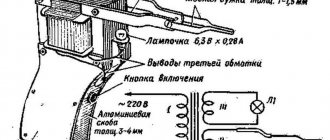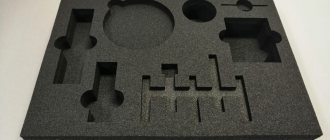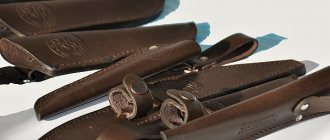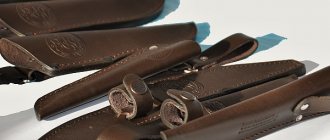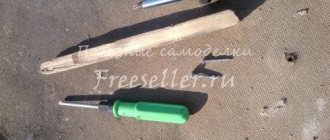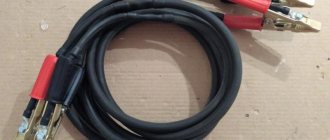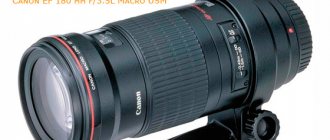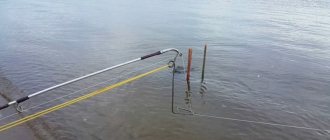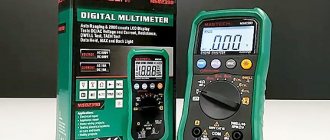When laying electrical cables inside a house or apartment, the cores are connected in junction boxes. The most common technique is based on twisting stripped cores. A novice electrician needs to know how to properly twist wires together and ensure reliable insulation of the joint.
Types of twists
There are 2 types of wire twists:
- Allowing you to increase the length of the main line or connect lines in a distribution box. The insulation is removed from the mating elements, and then the wires are carefully twisted.
- Designed for organizing a branch. Part of the insulator on the main cable is removed, and the core of another line is tightly wound onto the exposed area.
PPE caps: why electricians constantly argue about them
The basis for creating an electrical contact here is the same twist, but it is performed in a short section and is reinforced by compressed coils of the spring, immediately closed with a dielectric cap.
Similar connectors came to us from the west. They are now widely used in frame construction: installation is easy and quick, and is stipulated by the rules.
At first glance, the design is ideal for an electrician: the work is done quickly and does not require much effort. But there are many complaints about PPE caps (insulated compression). Let's dwell on them.
The caps are not universal. They are created for a specific wire size. A thinner section will not allow the spring to compress the twist normally, although it is made in a conical shape.
Careless installers do the twisting using pliers, and simply put the cap on it as insulation. Since it is poorly secured by springs, it often flies off, exposing the metal under tension, which is dangerous.
Initially, the twisting must be prepared, but the main pressing force is created by springs when manually screwing the housing clockwise.
Simple PPE caps have an insufficiently strong spring and a satisfactory dielectric body. Manufacturers improved their shortcomings by releasing the SIZ-K model, specified by the technical specifications of the TU 3449-036-97284872-2007 series.
They allow you to mount three cores in one housing due to the use of a special galvanized spring with a rectangular cross-section profile, which has increased adhesion to the metal of the conductors.
Reinforced wings on the body facilitate installation and reduce the manual effort that must be applied when screwing. The design of the lower part of the skirt has increased protection of the contact connection.
The insulation of PPE caps is designed for voltages up to 600 volts.
However, many electricians try to use this design only in lighting networks with small current loads, for example, when using LED lamps.
Independent tests under maximum loads do not show reliable performance of PPE. In addition, the market is flooded with beautiful fakes made using simplified technology.
Preparatory activities
At the preparation stage, the cables are brought out into junction boxes and the insulation layer is removed with special pliers or a construction knife. Trimming the cores is not allowed, since the core will break along the notch line when bending. It is difficult to damage a single-core wire; the problem is common when stripping multi-core copper cables with a knife. If the core is aluminum, then there is a risk of it breaking when bent due to the low ductility of the metal compared to copper.
Since a protective varnish is applied to the surface of the cores, the cores must be wiped with a cloth moistened with paint solvent or acetone. To remove the layer of oxides formed when the stripped wire is exposed to air, use fine-grained sandpaper or a needle file.
Treated surfaces are wiped with a dry cloth to remove traces of dust.
Required tools for wiring connections
To complete the work you will need:
- pruning pliers;
- special pliers or a construction knife for removing insulation;
- pliers or a screwdriver attachment for twisting the wires;
- test device to check the functionality of a circuit.
DIY wire jewelry. Tool for the job.
To work with wire using the wire wrap technique, we need a small set of hand tools .
To work with wire, I recommend purchasing pliers with silicone tips. It is very convenient to work with wire braids without damaging it. I bought pliers with red handles in China - see HERE .
If you decide to get serious about making wire jewelry using the wire wrap technique, you will need the “right” wire cutters. There, in China, I bought small and large side cutters.
Detailed instructions for twisting wires together
The connection method is chosen depending on:
- number of cores in cables;
- core material;
- sections of metal parts.
Stranded Wires
Multicore cables made of copper or aluminum can be connected using the following technologies:
- Sequential twisting with overlapping bare areas at right angles and subsequent winding of one cable over the surface of another. Then the free part of the second wire is wound onto the resulting connection. To increase the strength, the cables must be pulled to the sides. The connection has a diameter 40-50% larger than that of an insulated wire. Before pairing, you can put a heat shrink tube on one of the cables.
- Parallel twisting, which involves connecting the cores in a spiral. The technology ensures a tight joint with an increased contact patch. For insulation, a shrink tube or tape made of fabric or PVC is used.
- Bandage twist, which is designed for wires with an increased core cross-section, which does not allow for manual connection. The bare wires are placed parallel and then wrapped with thin wire (copper or aluminum depending on the material of the mating elements).
Single-wire
When connecting single-core cables, difficulties arise due to the increased rigidity of the core. When trying to bend an element with an increased cross-section (more than 10 mm²), there is a risk of breaking the core. If a construction knife is used to remove the insulator layer, the blade is directed at an angle of about 30° to the surface, preventing damage to the core. The bare area must be at least 50 mm long.
The resulting twist is checked by connecting the rated load. Intense heating of the joint indicates insufficient contact area.
Single-core wires are connected using the following technologies:
- Parallel twisting with holding the cables with pliers with protective pads on the jaws and twisting the cores in a spiral with pliers. A shrink tube is put on the resulting connection and heated with a lighter or a hair dryer.
- Consecutive joining with simultaneous winding of the bare ends of the wires on top of each other. The turns must fit tightly; gaps impair strength and reduce the quality of the connection. To protect the joint, use a shrink tube pre-attached to one of the cables.
- Twisting with welding of the tip using a carbon electrode. The technology is used when installing wiring in distribution boxes. To perform the work, you need a small-sized welding machine (for example, “Compact 160”). Only the tips of the twisted conductors are heated; welding of the entire joint line is not required. For insulation, use PVC tape or shrink tube.
Bolt connection: when to use
I specifically highlighted this type of connection separately because it is used in rare cases. Here, too, you can connect wires made of different metals, including connecting copper and aluminum through intermediate steel washers.
The rings must work in compression. It is acceptable, but highly undesirable, to connect three wires. No more.
A separate threaded connection for a screw does not look beautiful and requires additional insulation. It cannot be hidden in plaster, grooves, under suspended or suspended ceilings. It must be provided with free access for preventive examinations.
For these reasons, a connection with a separate bolt or screw is used as an exception when other methods cannot be used or are not advisable.
Most often it can be found in industrial installations after repairing a certain section of the circuit, and not in a home environment.
Walnut connection
3 square metal plates with four holes in the corners are bolted together, forming two cavities for connecting different conductors. They can be used to join copper and aluminum.
The increased dimensions of the plates ensure heat dissipation. Live parts are covered with a dielectric casing.
The bolt compression force provides good contact resistance of the electrical contacts.
The disadvantages of the design include the large dimensions of the walnut terminal block, which require additional space in the electrical panel.
Insulation methods
To protect the joint use:
- fabric or polyvinyl chloride insulating tape;
- heat shrink tubes;
- PPE safety connecting caps with a spring clip.
The basic option is insulating tape, which is tightly wound around twisted conductors. The fabric material absorbs moisture, but is suitable for work at subzero temperatures. PVC tape hardens when cooled and becomes brittle, but under normal conditions it wraps easily around cables. In distribution boxes, it is better to use elastic tubes that tightly envelop the metal cores when heated with a hair dryer or the flame of a lighter.
Tightening method
For this type of clamp you will need a fairly long piece of wire. One end of the wire must be firmly fixed.
A piece of reinforcement is attached to the second end of the wire, which will allow you to tighten the clamp.
We put the hose on the fitting or water pipe. We wrap the wire around the hose - make two turns.
Holding the fittings tightly and pulling the wire tightly, you need to twist the hose back and forth. Thanks to this, the clamp tightens.
After this, you will need to rotate the hose 180 degrees to twist the ends of the wire on the clamp. Excess ends need to be cut off with side cutters.
What are the dangers of twisting wires?
Disadvantages of the technique:
- the need for careful insulation of twisted conductors;
- heating of connected wire cores when connecting a powerful load;
- risk of overheating and ignition of the twist;
- When disconnected, cable cores may break.
Even properly performed twisting can withstand small loads. The joint line has resistance; when an electric current passes, the conductors heat up. When the power is turned on and off frequently, the cores are destroyed, de-energizing the circuit with connected consumers. GOST 10434–82 and PUE require rigid mating of cores using soldering, welding or clamps.
Advantages and disadvantages
Weaving wires together is probably the oldest method of merging conductors together. However, over time, the power of devices requiring high currents also increases. Twisting, as a rule, is not designed for them, but for home use it is very appropriate.
It is worth mentioning that this wiring option cannot be used with devices such as electric kettles, refrigerators, washing machines, heaters and fan heaters, electric stoves, and computers.
The main advantages of twisting are:
- speed of creation;
- durability (if done correctly);
- the ability to weave wires without additional tools;
- ideal for signal contact (in the absence of connecting high-current consumers);
- the ability to improve the connection using soldering;
- cheapness;
- the ability to combine two, three, four wires simultaneously;
- Possibility of reconnection.
Its disadvantages include the following:
- the need for isolation;
- operability only with low-current consumers;
- inconvenient installation;
- fire hazard if work is performed incorrectly;
- a large number of nuances that MUST be taken into account when weaving wires;
- “surges” of voltage and interference on electrical appliances when the area is overloaded.
As can be seen above, twisting has a limited range of use; it cannot be used with powerful devices, and when used with computers, modern televisions, audio equipment and other equipment of the 21st century, there is a problem with the occurrence of interference and “throws”. Therefore, it is advisable to weave wires when used with lighting devices (chandeliers, lamps, etc.), power adapters and other “weak” devices.
What are the types of winding?
There are five main vapers. Among them there are simpler and more difficult ones to master.
Microcoil is a very compact coil with a relatively large heating area. The turns are located close to each other. During use, a lot of steam is generated.
Regular coil - here there is a small distance between the turns of the spiral. This spiral is the easiest to wind.
“Pigtail” - consists of two intertwined wires. This is done to increase the heating area.
Parallel - a type of coil when the spiral is wound from two pieces of wire folded together. This increases the heating area. The results are optimal – both taste and amount of steam.
Art coils are aerobatics, which beginners should not attempt. The weaving is complex and consists of a pattern. It looks beautiful, and most importantly gives a rich, unique taste.
Raw materials for heaters
Initially, heaters are installed from resistant materials, which include alloys.
The current-conducting elements of heating elements are nichrome and fechral.
. These are alloys consisting of 2-3 components. In the first case, Ni and Cr were combined, and in the second, Fe, Al and Cr. For each type of equipment, the wire diameter, network voltage, generated power, and resistance per unit area are taken into account.
How to choose the right wire? There are standard Fechral, Superfechral, Eurofechral. What is better to take: expensive nichrome or more fragile fechral? How to choose the correct parameters of a resistive material for air and liquid environments?
It is very convenient when you have a special mathematical tool into which you enter the necessary components - and it gives a ready-made answer on the selection of material for the wire, its length, diameter, shape (straight or spiral). Such a calculator has already been developed and is presented below.
Wire spiral.
I described in detail how to make a short spiral for our pendant in the previous master class. You can learn how to make a long spiral for larger jewelry in the video below.
For the Tree of Life Pendants I used long spirals. If interested, click on the photo below and find out more about the master class in PDF format!
Where to buy nichrome wire
Current prices for nichrome wire, tape, thread.
In the price list of the PARTAL company, as well as in the Online store, along with a wide range of special alloys with special properties, you can select nichrome wire of the required grade for the manufacture of heating elements.
You can also order standard and non-standard electrical spirals of any complexity.
Conclusion
top
Creating complex windings requires experience, and if the first attempts are not successful, do not despair. With increasing skills, you can create even more complex coils, since the above instructions are not “GOST” - vapers can invent their own combinations of coils. For example, making a “pigtail” of several Claptons, adding additional strands to a Fused Clapton, or applying additional braiding around the Tiger in the Clapton manner. Everything is limited only by the author’s imagination and the physical dimensions of the atomizer.
